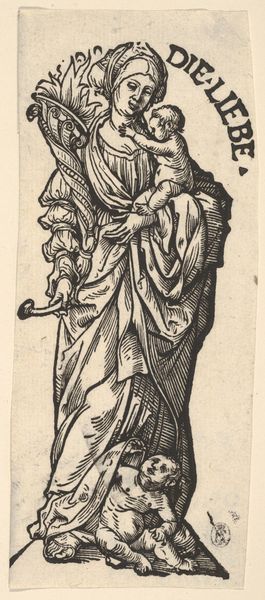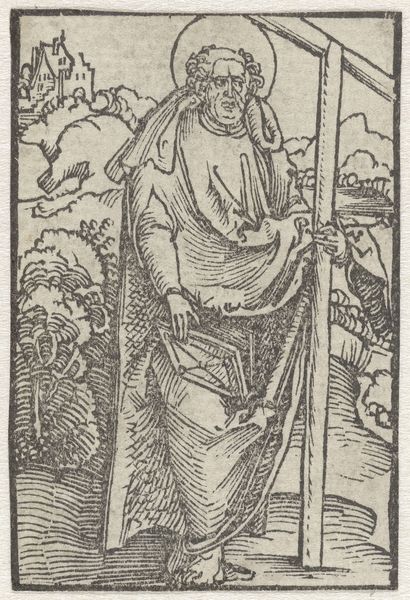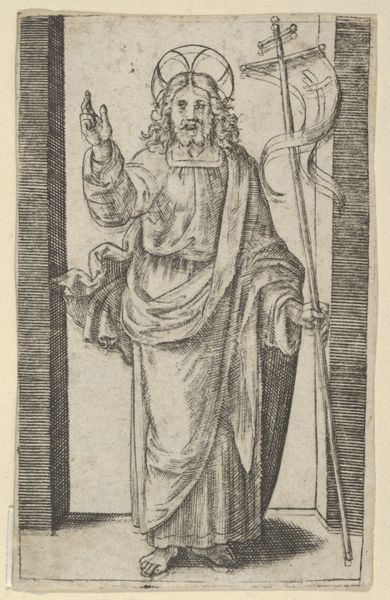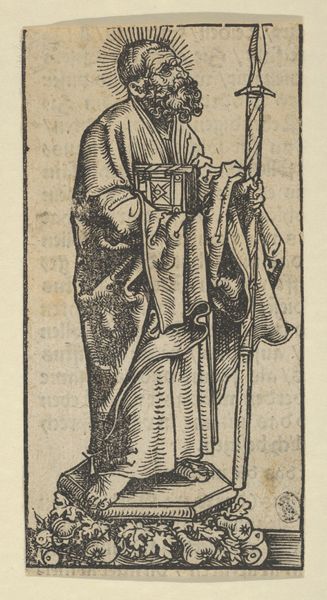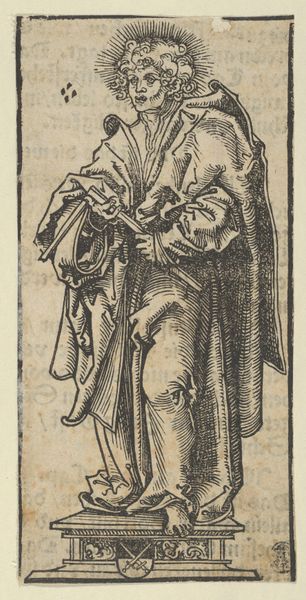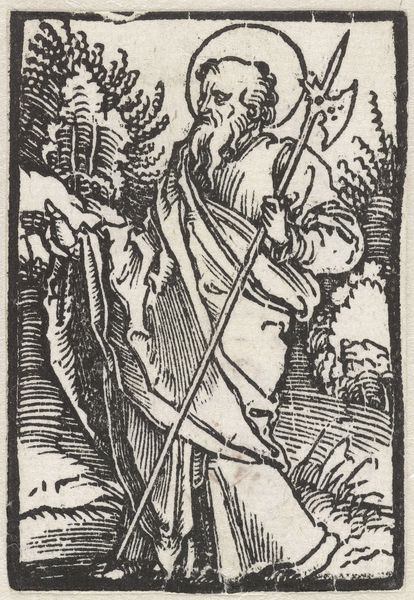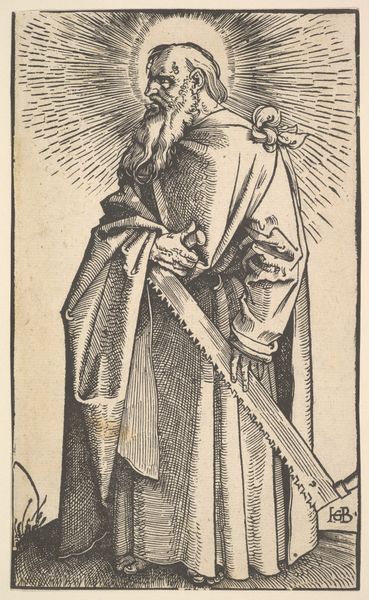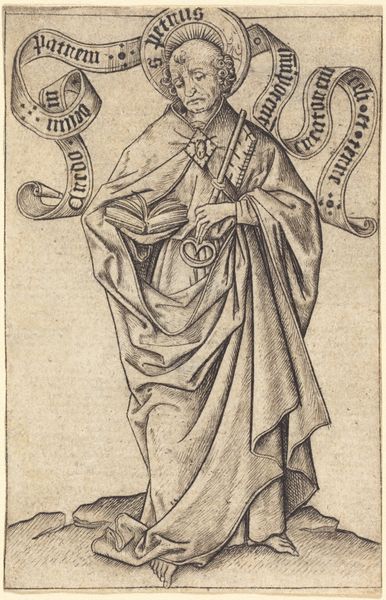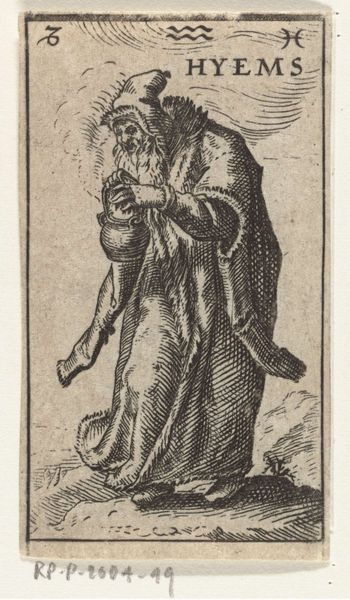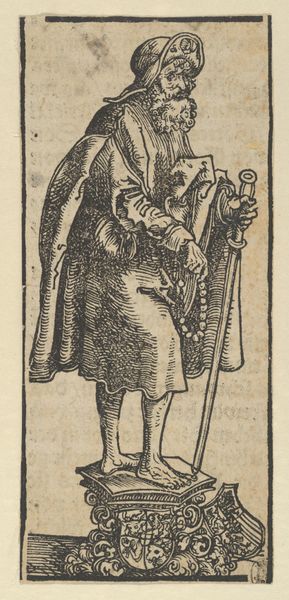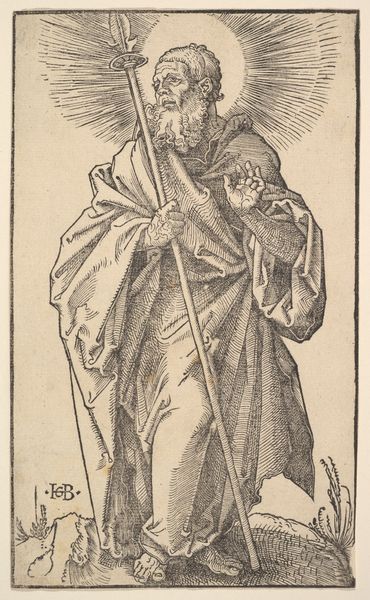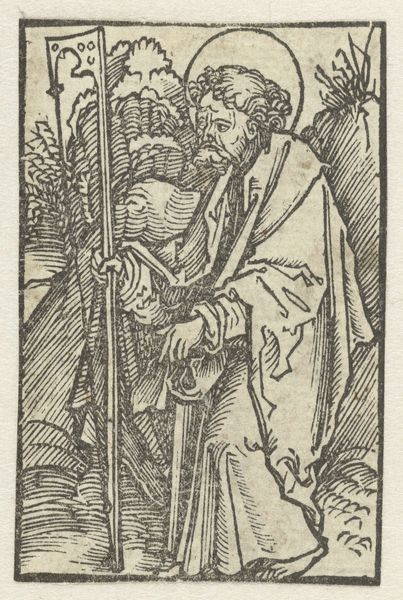
Faith (Der Glaub), from The Seven Virtues 1498 - 1531
0:00
0:00
drawing, print, woodcut
#
drawing
#
allegory
# print
#
figuration
#
woodcut
#
northern-renaissance
Dimensions: Sheet: 6 13/16 × 3 1/16 in. (17.3 × 7.7 cm)
Copyright: Public Domain
Curator: Here we have Hans Burgkmair's woodcut, "Faith (Der Glaub)," part of the "Seven Virtues" series, dating back to between 1498 and 1531. It’s a fantastic example of Northern Renaissance printmaking. Editor: Immediately, the graphic quality jumps out. Stark contrasts, confident lines. There's a weightiness to the figure and a clarity in how the textures are rendered that are remarkable, considering this is just a woodcut print. Curator: Absolutely. And what interests me most is how Burgkmair grapples with the representation of faith, personified as a female figure. Note the careful balancing act she performs, holding a chalice in one hand and a crucifix in the other, visual manifestations of holy communion. This encapsulates so much of late medieval religious identity and anxiety about salvation through good works versus faith alone. Editor: Right, that chalice and crucifix are significant. You've got the means of celebrating mass presented right alongside the literal instrument of Christ's martyrdom. This suggests a very deliberate emphasis on the tools, the actual material mechanisms, through which faith is enacted, isn't it? The halo seems almost an afterthought. Curator: I see the halo as almost an ethereal statement amidst the reality of suffering. The placement also echoes broader concerns around gender, belief, and representation of feminine figures in late Medieval religious society and how the era placed significant emphasis on female spirituality as symbolic representations. Editor: It is compelling how that duality shows in her stance and gaze as well. You’ve got this figure simultaneously burdened and empowered by the objects she bears. Curator: It underscores a very interesting tension, yes? Between abstract spiritual belief and its tangible, almost utilitarian application within the church's material culture. It begs us to consider how power intersects with gender and spirituality. Editor: Exactly. It makes me appreciate the skill needed for woodcut design—it's all very carefully calculated to achieve a range of texture. Looking at it today prompts conversations about production and the translation of religious meaning into reproducible imagery. Curator: A great summary—and I agree. Reflecting on it, it reminds me that "Faith," as with all symbolic virtues, is deeply informed by complex factors, all layered in meaning from theology to the social landscape. Editor: For me, thinking about what a relief process adds—and equally omits—reconfigures our understanding of the relationship between faith and labor during this historical era.
Comments
No comments
Be the first to comment and join the conversation on the ultimate creative platform.
